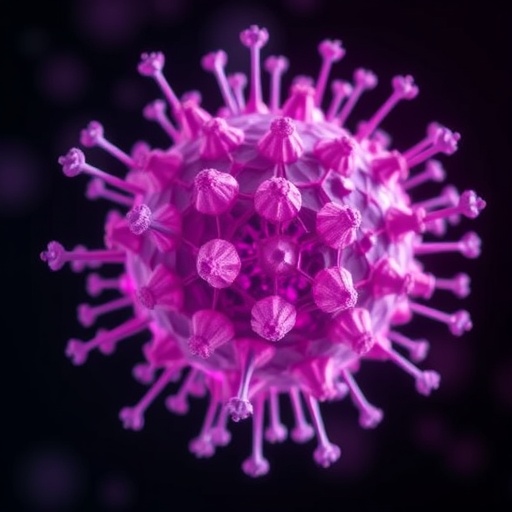A groundbreaking advancement in cancer treatment has emerged from researchers at Oregon Health & Science University (OHSU), where a novel nanoparticle technology is poised to revolutionize the way high-intensity focused ultrasound (HIFU) is used against solid tumors. This innovative nanoparticle-assisted therapy not only amplifies the precision and efficacy of ultrasound treatments but also significantly reduces collateral damage to healthy tissues, marking a profound leap forward in oncological therapeutics. Published in the prestigious journal Nano Letters, this study illuminates a path toward safer, more potent, and potentially curative interventions for aggressive cancers, while opening doors for applications beyond oncology.
High-intensity focused ultrasound has long been celebrated for its non-invasive approach to mechanically ablating solid tumors, using concentrated acoustic energy to physically disrupt malignant cells. Yet the clinical utility of HIFU has been hindered by two fundamental obstacles: the necessity for substantial energy input, which often results in inadvertent thermal injury to surrounding healthy tissue, and the incomplete destruction of all cancerous cells within the targeted tumor mass. Residual cells can evade treatment, subsequently leading to tumor recurrence and metastasis, thereby necessitating additional therapies with their attendant risks and costs.
The OHSU research team, led by co-lead authors Michael Henderson, B.A., and Li Xiang, Ph.D., devised a sophisticated solution by engineering minuscule nanoparticles approximately 1,000 times smaller than the width of a human hair. These nanoparticles are far from inert; their surfaces are studded with microscopic gas-filled bubbles that act as cavitation nuclei. When exposed to focused ultrasound waves, these bubbles undergo violent oscillations and collapse — a process known as inertial cavitation — which unleashes mechanical forces that selectively shatter tumor tissue. This phenomenon dramatically enhances the mechanical ablation efficiency while minimizing the generation of heat, thus preserving adjacent healthy tissue integrity.
What sets this approach apart is the integration of a targeted delivery mechanism. The nanoparticles are functionalized with specialized peptides that confer tumor-homing capabilities and facilitate cell membrane penetration. This molecular targeting ensures that the therapeutic action is concentrated within the malignant tissue, maximizing impact and minimizing systemic side effects. However, the ingenuity of the platform extends further: the peptides are conjugated with a potent chemotherapeutic agent, creating a mechano-chemo synergistic effect that researchers metaphorically describe as a "one-two punch." The ultrasound-induced mechanical disruption physically dismantles the tumor structure, while the chemotherapy drug eradicates any cancerous cells that survive the initial assault.
Preclinical trials involving human melanoma models implanted in mice have demonstrated unprecedented outcomes. The combined therapy of ultrasound and drug-laden nanoparticles not only deepened tumor destruction but also facilitated enhanced drug penetration and retention within the cancerous mass, exceeding the effectiveness of separate treatment modalities. Crucially, the required ultrasound energy was reduced by an astonishing 100-fold, allowing the use of brief, low-energy pulses that mitigate the risks of overheating or damaging healthy tissue.
Mice subjected to this novel approach evidenced remarkable tumor regression, with some cases achieving complete tumor disappearance and sustained remission extending beyond 60 days. These results underscore the therapy’s potential to provide durable responses and improve survival without eliciting significant adverse effects, a notorious challenge in conventional cancer treatments. The dual-action nanoparticles thereby represent a promising new weapon in the arsenal against tumors notorious for their resistance to therapy and propensity for recurrence.
Beyond cancer, the multifunctional capabilities of this nanoparticle platform hint at broader biomedical applications. The capacity to combine mechanical disruption with targeted drug delivery could revolutionize treatment paradigms for a variety of conditions, including certain infections and cardiovascular diseases, where localized therapies could improve outcomes while diminishing systemic toxicity. This versatility accentuates the transformative potential of the technology, positioning it as a cornerstone of future medical innovation.
The inception of this research in 2018 has culminated in a robust, scalable approach that researchers at the OHSU Knight Cancer Institute’s Cancer Early Detection Advanced Research Center (CEDAR) continue to refine. Senior author Dr. Adem Yildirim, Ph.D., emphasizes the excitement around translating this platform into immunotherapy applications, envisioning a future where mechanical tumor ablation synergizes with immune modulation to unleash more powerful, durable anti-cancer responses while preempting relapse.
Michael Henderson embodies the deep-rooted connection to OHSU, having been born at the institution and nurtured academically and scientifically within its synergistic ecosystem. Now pursuing his doctoral studies in biomedical engineering, Henderson’s work intricately weaves the development of responsive nanomaterials with clinical aspirations. Under the mentorship of Drs. Stuart Ibsen and Yildirim, Henderson’s research endeavors are dedicated to enhancing the effectiveness of immunotherapies and advancing liquid biopsy technologies via innovative nanoparticle engineering.
The publication represents a pivotal milestone not only for Henderson personally but also for the broader scientific community striving to revolutionize cancer care. The demonstrated ability of nanoparticle-assisted ultrasound to selectively target tumors with precision and potency while safeguarding healthy tissue boundaries offers a promising glimpse into the future of oncological interventions. Despite being in the early stages, this technology lays a crucial foundation that could redefine the therapeutic landscape for patients suffering from hard-to-treat malignancies.
In summary, the synergy of physics, chemistry, and molecular biology realized through peptide amphiphile–nanoparticle assemblies heralds a new era of mechano-chemo combination therapy. This technology’s ability to render ultrasound treatments safer and more effective, coupled with precision-targeted chemotherapy delivery, represents a landmark advancement with far-reaching implications. As ongoing studies continue to optimize and validate this approach, the scientific and medical communities eagerly anticipate its transition from bench to bedside, where it holds the promise of enhancing patient outcomes and quality of life worldwide.
Subject of Research: Nanoparticle-enhanced focused ultrasound cancer therapy
Article Title: Peptide Amphiphile–Nanoparticle Assemblies for Mechano-Chemo Combination Therapy
News Publication Date: 5-May-2025
Web References:
https://pubs.acs.org/doi/10.1021/acs.nanolett.5c01112
https://news.ohsu.edu/2025/04/21/ohsu-is-first-in-oregon-to-offer-new-prostate-cancer-treatment-option
References:
Michael Henderson, B.A., Li Xiang, Ph.D., Adem Yildirim, Ph.D., et al. "Peptide Amphiphile–Nanoparticle Assemblies for Mechano-Chemo Combination Therapy." Nano Letters, 2025.
Keywords:
Cancer, Nanoparticles, Tumor cells, High-intensity focused ultrasound, Mechanical tumor ablation, Targeted drug delivery, Chemotherapy, Immunotherapy, Nanomedicine, Peptide-functionalized nanoparticles, Melanoma, Mechano-chemo therapy




